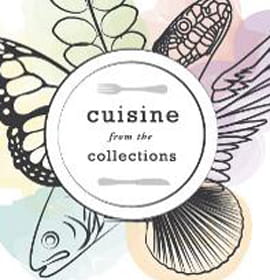Crickets, Worms on Menu at Halloween Cocktail Party Hosted by Academy of Natural Sciences

The nation’s oldest natural history museum is throwing a cocktail party featuring a menu of exotic and everyday foods inspired by its famous plant and animal collections. Farm-raised python, anyone?
Cuisine From the Collections will take place Saturday, Oct. 27, from 7–10 p.m. at the Academy of Natural Sciences of Drexel University (1900 Benjamin Franklin Parkway). Adventurous grazers will be treated to an eclectic variety of food options such as venison, seaweed and dishes prepared with ingredients not found in most kitchens, including healthful crickets and worms. The cocktail party is open to adults, and proceeds benefit the Academy’s mission of encouraging and cultivating the sciences. Guests are encouraged to dress in Halloween costumes or cocktail attire.
Tickets are $75 for Academy members and $100 for nonmembers, and can be purchased at http://www.academycuisine.eventbrite.com. Valet parking will be available at the parkway entrance.
Food will be provided by the Academy’s caterer, 12th St. Catering and chefs and students from the hospitality management, culinary arts and food science program in Drexel University’s Goodwin College of Professional Studies. Drexel students and Chefs Charles Ziccardi, Adrienne Hall, Edward Bottone and Donna Maguire from the will prepare exotic dishes that combine elements from various collections in the museum.
While many of the living plants and animals represented by the Academy’s 18 million research specimens already are food for some species or other, there are many creatures that aren’t so commonly eaten by your average citizen – python, buffalo, seaweed and rabbit are a few. Academy scientists will be on hand to inform diners of the scientific fields of study and Academy collections in which menu items are categorized, such as rambutan (botany), salts (mineralogy), sushi (ichthyology), snails (malacology) and crickets (entomology).
Drexel News is produced by
University Marketing and Communications.
